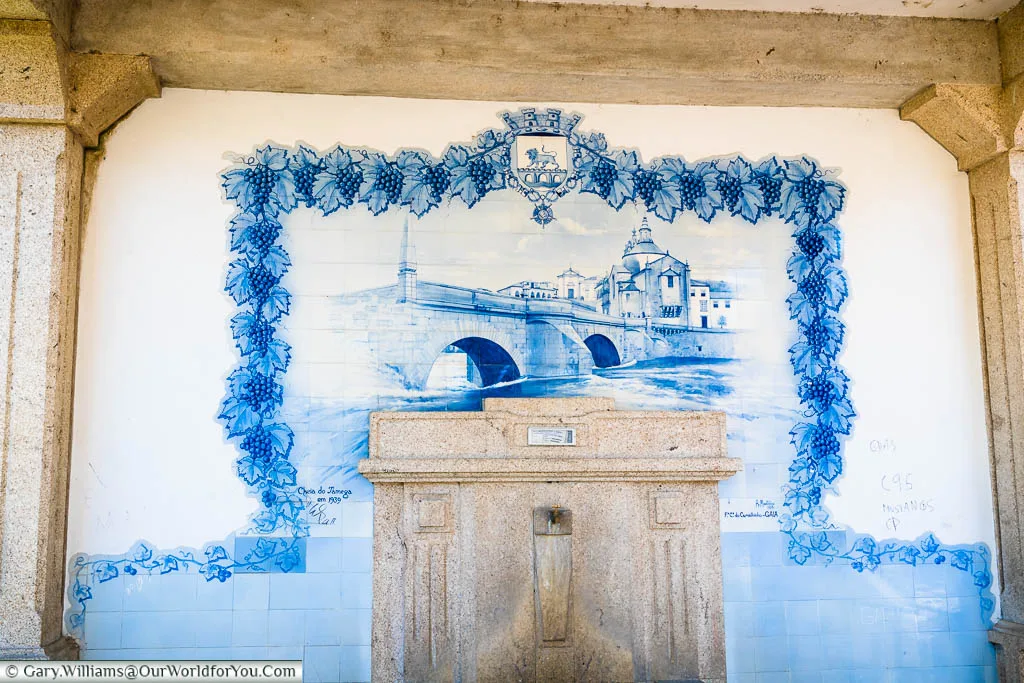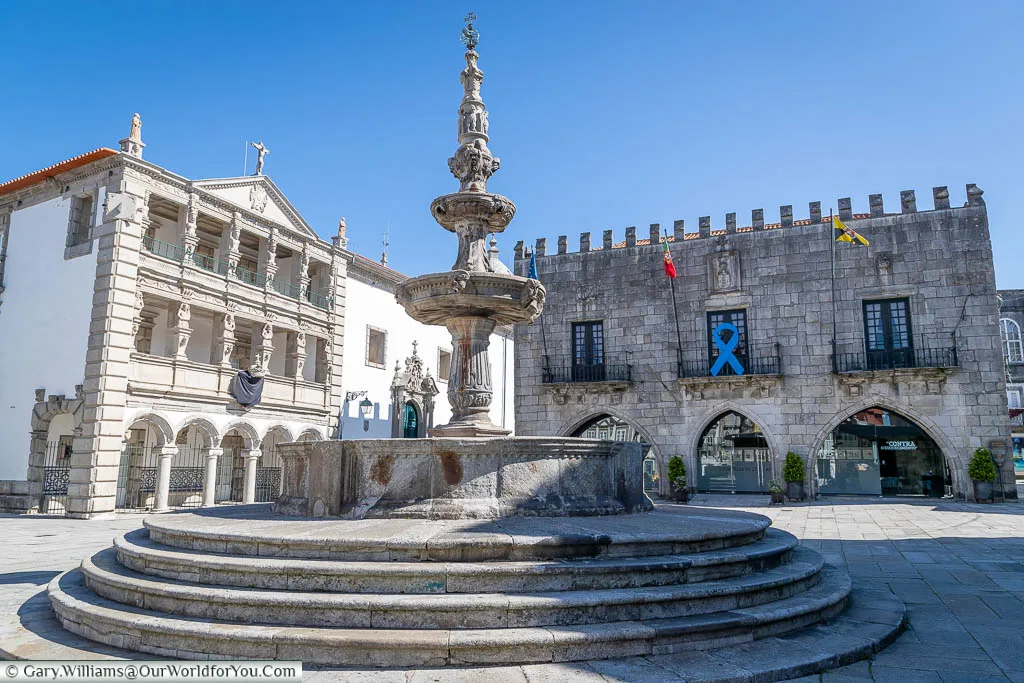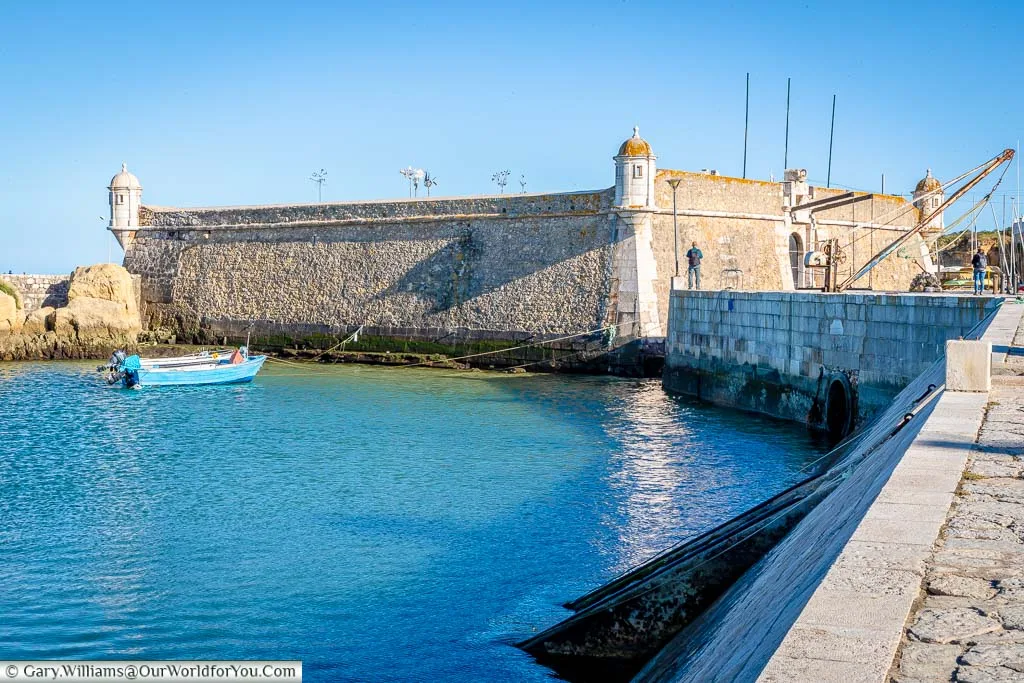8 delightful Portuguese locations you’ll want to explore - Part II
Portugal appears to be on everyone’s lips at the moment and not just for its delicious bifanas, bacalhau, Port Wine and Vinho Verde. Although they are excellent reasons to head to Portugal for a holiday.
Gary and I fell in love with Portugal a few years ago when we visited Lisbon for a mini-break. Then completely smitten with Portugal and the welcoming culture, charming locals and rich history, we ventured off on a 2-week road trip touring north, south, east, and west.
The pleasure of an independent road trip is that when you pass through tranquil rural villages, picturesque towns, and beautiful countryside, you can stop wherever and whenever you wish.
Portugal is your oyster!
We can’t wait to return and explore more of Portugal. We’ve been given so many fantastic recommendations of places to visit that we could easily fill another road trip.
So, after sharing with you our first inspiring post on 8 Portuguese towns and cities, I’ve chosen a further 8 to add to your travel list. Hopefully, these will encourage you to grab your passport and start planning a Portuguese adventure.

Our 8 Destinations
Amarante is located in the Minho Region of northern Portugal and only 38 miles (60km) to the east of Porto.
Nestled along the Tâmega River, Amarante is a delightful city to visit. The historic pedestrian stone bridge that straddles the river offers picturesque views up and down the Tâmega waterway. Although, one of the most impressive views in Amarante is the sight of Convent of São Gonçalo de Amarante.


Strolling up through the town, you get a warming feeling like you’ve stepped back a few decades in time. Charming little stores were selling a weird and wonderful mix of household items amongst rustic cobbled lanes.
The welcoming historic streets are a pleasure to amble around. The teetering wrought-iron balconies were protruding high above, and ancient architecture around many corners.
Where to stay in Amarante
Local information
Staying within the northern region of Portugal we head to Guimarães the birthplace of this ancient country and the first capital of Portugal in the 12th century.
Guimarães is a reasonably small UNESCO city full of such incredible charm and beautiful architecture amongst its ancient lanes.
Not only is there plenty to see in Guimarães, but it is also a perfect location to base yourself while discovering the UNESCO Douro Valley wine region.



Where to stay Guimarães
Local information
Start planning

Our timing when we visited Monsaraz was perfect, it was late afternoon, and the narrow lanes lined with whitewashed homes were so tranquil and empty. It was idyllic ambling through the cobblestone streets with spring blossom tumbling from the window boxes.
The medieval walled town of Monsaraz has witnessed some tumultuous times over the centuries. Due to its prime hilltop location near the Spanish border, it has been fought over on many occasions. The Moors have left their mark along with the Spanish, and even the Knights Templar played a role.

Perched at the far end of this attractive town is the 13th-century Monsaraz Castle. The ancient Keep can be seen for miles across the far-reaching Alentejo countryside.
Stepping through the gates of Monsasraz Castle and into the inner courtyard, you’ll immediately notice that this fortress was once an amphitheatre. The timeworn tiered seating that would have encircled the arena for the spectators to enjoy the exhibition taking place below can still be seen.
Where to stay nearby Monsaraz
Local information
I couldn’t complete a post on Portugal and not include Lisbon, the city where we fell in love with this beautiful country.
Lisbon is an incredible city and has such rich history; it is one of the oldest cities in the world. Lisbon is located on the banks of the River Tagus, where it meets the Atlantic Ocean. In 1755, a huge part of Lisbon was destroyed by a devastating earthquake and tsunami, which was felt far and wide.

It’s difficult to know where to start with Lisbon as there is so much to see within the cities ancient Seven Hills. However, a day trip to Sintra is highly recommended if you have the time, and the short trip to Belém is a must.
At Belém, you’ll find the Monument to the Discoveries and the UNESCO sites of the Monastery of the Hieronymites and Tower of Belém. And don’t forget, while you’re in Belém, head to Pastel de Belém to indulge in the delicious custard tarts Pastel de Nata.

The heart of Lisbon is divided up into neighbourhoods, each with its own tale to tell. The Alfama district, which is the oldest region in Lisbon, is delightful to stroll around; remember to jump out the way of the historic trams. In Alfama, you can explore the Castle of São Jorge, Lisbon Cathedral and the National Pantheon. If your timing is right, you can also have a rummage around the local flea market.
Many charming squares are dotted around Lisbon; also, search out the Miradouros that offer wonderful panoramic views across Lisbon’s rooftops.
I especially enjoyed our visit to Carmo Convent and Largo do Carmo, high above the city and just by the Elevador de Santa Justa.

Where to stay
Local information
I love nothing more than planning a trip and so often I use the DK Eyewitness books. This Top 10 Pocket Travel Guide was invaluable to us.
We used a previous version of this book to plan our Lisbon mini-break, now you can grab the revised copy.
For Viana de Castelo, we are back discovering the delights of Portugal’s northwest region.
The 13th-century city of Viana de Castelo is nestled at the mouth of the Lima River. Due to its prominent position in the Atlantic Ocean during the 16th-century, Viana do Castelo played a significant maritime role in the Portuguese Discoveries.

Viana do Castelo is relatively easy to explore on foot and has an interesting mix of architectural styles, including Baroque, Renaissance and Manueline. Take a stroll through the historic streets and discover Viana do Castelo Cathedral and the charming Republic Square.
All around Republic Square and its renaissance fountain are eye-catching buildings and homes with beautiful azulejo tiling and wrought-iron balconies.

Where to stay in Viana do Castelo
Local information
Our Portuguese road trip itinerary

In Évora, there is so much to explore. Ancient Roman ruins, the rooftop of Évora Cathedral and the rustic cobble streets amongst the whitewashed homes are just the beginning.
It’s such a delight strolling through the lanes not knowing what you’ll find around the next corner.
There’s a tranquil park with peacocks elegantly strutting amongst stone ruins. A short hop from the park is the intriguing Chapel of Bones, on display in St Francis Church.

There are around 5,000 skulls lining the walls, along with hundreds of limbs from the skeletons. Row after row, each bone is stacked painstakingly alongside another. The chapel was built in the 17th-century by three monks who wanted to express that life was so brief.
When you first arrive in Évora, you won’t fail to miss the vast aqueduct piercing through the skyline and disappearing amongst the Portuguese streets. King João III requested it to be constructed in 1532.

Where to stay
Local information
Our recent new found love is Portugal, it is such a beautiful country. While planning our trip, I used the DK Eyewitness books. I find them extremely informative, easy to follow and the pictures and maps tempt you into discovering more.
We used a previous version of this book to plan our north to south Portuguese road trip, now you can grab the revised copy.

Crossing the promenade from the castle is the late 17th-century Ponta da Bandeira Fort. This is one of the many forts constructed along the Algarve coastline. Enabling the locals to protect themselves from pirates and buccaneers.
Lagos does attract a lot of visitors due to its location along the Algarve shorelines. However, just by strolling a couple of lanes back further into town and you’ll discover a more peaceful side to Lagos.
As I mentioned, Lagos has had a chequered past. In the main square of Praca Infante Dom Henrique is the site of the first slave market in colonial Europe, dating from 1444.
Today the same market building is now a museum to this appalling era in history.

Where to stay
Local information
Discover more

9 UNESCO Sites to visit in Portugal

When bathing became popular through the late 19th-century, the King of Portugal, Dom Luís I, chose Cascais as his summer residence. The town was transformed into a fashionable resort attracting the wealthy folk of Portugal.
The beaches and secluded bays along this stretch of the Portuguese Riviera and the glorious sunshine are still welcoming many visitors today.

Where to stay
Local information
* This post may contain links to affiliated sites where we earn a small commission at no additional charge to you.


